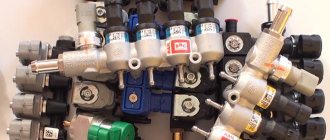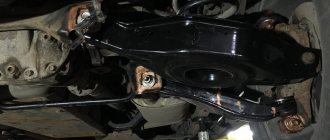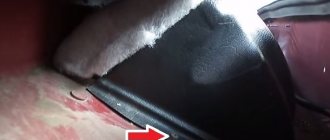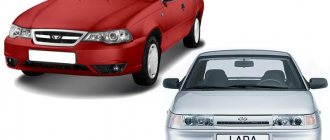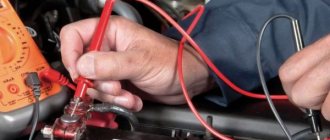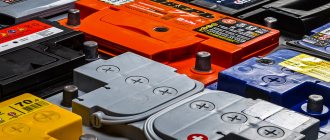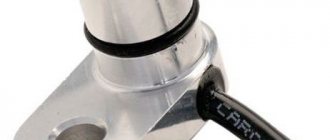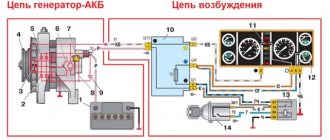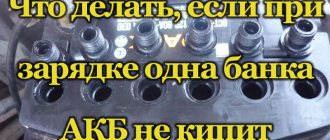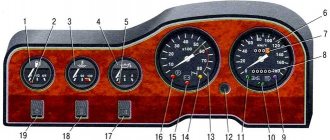The VAZ 2115 is a subcompact front-wheel drive car. It is made in a sedan body. Developed, produced and manufactured at the Volzhsky Automobile Plant. The vehicle is part of the Lada Samara family.
VAZ 2115 is the first-born of a series of cars called SAMARA-2. After the end of the Sputnik/Samara family, which became the most uncharacteristic LADA model for the manufacturer. The fact of modernization of the car is confirmed by the fact that the 2115 has significantly modernized the front and rear parts of the body.
The biggest changes have been made to the luggage compartment lid and lighting fixtures. On cars of the VAZ 2113 and VAZ 2114 series there were no such transformations. In fact, 2115 is a product of a deep restyling of the VAZ 21099 model.
The main differences from the previous version were a modified modification of the hood and wings, a luggage compartment lid, improved front and rear optics, bumpers painted in the main color, a luggage compartment spoiler equipped with an additional brake light, as well as the presence of door sill fairings and moldings on the doors. Additionally, modernized electrical equipment was installed.
Development
Initially, the car was planned to change only the external frame of the body, as well as to further improve all the main systems of the car. The most important components affected include improved suspension, transmission and brakes.
However, later, in order to unify production, components began to be borrowed from the Lada Samara family of cars without any significant changes. The latter made it possible to achieve an extremely high degree of unification with cars of the 9th family. In addition, the car became more aerodynamic, which reduced fuel consumption and also led to the disappearance of parts inside.
Loading into the luggage compartment has become more convenient in the car. Now, the loading height was at the level of the bumper. In addition, instead of outdated power units, they began to use a modern injection engine, which made it possible to achieve higher power and also consume much less fuel. During operation, the electronic system monitored the level of toxic gases.
The car's electrical equipment has been significantly improved. Now the package included a system of electric front door pullers, fog lights, as well as heated seats, found exclusively on luxury versions. Additionally, a monitoring system was installed on it, which made it possible to monitor the proper functioning of the lamps, oil volume, brake wear, as well as the amount of remaining coolant and washer fluid.
On experimental modifications of the car, starting from 1997 to 2000, VAZ-21083 carburetor power units with a volume of 1.5 liters were installed. The power of the power unit reached 71.6 horsepower. Additionally, a higher panel from the first generation Lada Samara was installed.
From the beginning of 2000, with the launch of the car into mass production in large series, more powerful VAZ-2111 engines began to be installed on it, which had a distributed fuel injection system, the power of which increased to 77.8 hp. with the remaining volume. In 2007, production began with an improved injection engine with factory index 11183, the volume of which was increased to 1.6 liters, while the power reached 80.9 hp.
Initially, models 21099 and 2115 were produced in parallel, until the ninth model was discontinued in 2004. In 2007, bumpers and side moldings began to be painted in the color of the car, without adding a gray stripe.
In 2008, an external restyling took place, which affected mainly cosmetic changes so that the car began to be more in line with automotive fashion (for example, instead of a wide molding on the car doors, they began to use narrower ones, which were made in the color of the body).
The most characteristic name for this car is Euro-molding. However, this detail did not look harmonious enough, taking into account the old bumper design.
Production ended in December 2012, along with the start of production of the new Lada Granta model.
Compared to its predecessors, the appearance of the car has been significantly changed. The main changes affected the interior, front and rear, as well as the interior. The main differences in comparison were the significantly larger amount of electronics used in the cabin. In addition, the car has become much more technologically advanced than its predecessor due to the ability to control lamps and much more.
The presence of a new design of the heating element allows for high-quality and productive heating of the interior. Additionally, the standard package now includes a system that notifies the driver of locked locks, unfastened seat belts, and the ignition key being left behind. By increasing the height of the trunk lid.
Engines and modifications
Since the characteristics of the starter battery depend on the parameters of the power unit, let’s consider the engines that were installed on the VAZ-2115 Samara. They all run on gasoline.
- VAZ-2103 (1.5 l; 68 hp).
- VAZ-21083 (1.5 l; 70, 76 hp).
- VAZ-2111 (1.5 l; 78 hp).
- VAZ-21114 (1.6 l; 80 hp).
- VAZ-11183 (1.6 l; 81 hp).
When the production of the VAZ-2115 had just begun, the car was equipped with 1.5-liter carburetor engines VAZ-2103 and VAZ-21083.
Subsequently, the VAZ-2111 injection power unit appeared, which was installed simultaneously with the catalytic converter and on-board computer. Since 2007, a modification of the VAZ-2115 has appeared, equipped with a 1.6-liter VAZ-21114 engine with distributed fuel injection. Later, a version also appeared on which a 16-valve VAZ-11183 engine with a displacement of 1.6 liters was installed.
All versions of the sedan were equipped with a 5-speed manual transmission and had front axle drive. All of them were produced in the body of brand 2115.
What battery is used on the VAZ 2115
Battery for VAZ 2115
produced by the domestic manufacturer AKOM.
Which battery for VAZ 2115?
These batteries belong to the middle price segment, so they can be safely used.
Both the battery for the VAZ 2115 injector
and carburetor modifications use a battery with the following parameters:
- The battery power supply has a high starting current for this class of car. The indicator is 520 A. This is quite enough to ensure high quality and performance of the engine regardless of weather conditions. However, it is advisable to buy batteries for the VAZ 2115
with higher power to ensure constant operation.
By the way, if you need wires for a VAZ 2115 battery,
you can purchase them from us. - The battery capacity is also quite high and amounts to 60A/h. For the budget class of small cars, this is enough to start the power unit many times during a trip. In addition, this makes it possible to ensure the functioning of all devices connected to the on-board network.
- Dimensions and polarity. The car has a battery with dimensions of 242x175x190mm. The polarity of the battery connection is straight.
How to search for battery characteristics using a selection service
The service for selecting batteries for VAZ cars is located at this link. On this page you will see a selection form, and below it there will be instructions for use. It describes the actions that need to be taken to obtain the data. The following picture shows the entire process in screenshots.
The end result will look like this.
Now an example of selecting a battery.
An example of selecting a battery for a VAZ-2115 using the service
In the case of the VAZ-2115, all modifications were equipped with batteries with similar characteristics. It was not possible to find the original numbers (articles) for them. If anyone knows, write in the comments.
For example, consider a modification of the VAZ-2115 Samara sedan, which was sold from 2011 to 2013. The engine of the car is VAZ-11183 (1.6 l, 81 hp). A 5-speed works with it. Manual transmission and front-wheel drive.
The batteries that were installed on the car during assembly had a capacity from 55 to 65 Ah, a cold cranking current from 480 to 640 A. The standard size was European L2 (242x175x190) with straight (+ -) polarity. The service for selecting starter batteries for VAZ cars is operating in test mode. Not all cars and modifications are available yet. Characteristics and battery numbers for them are gradually being added. People collect information. Therefore, errors, inaccuracies, incomplete descriptions, and so on are possible. We strongly recommend that you verify the information obtained here with data from other sources. If you find any errors, typos or missing car modifications, please let us know in this topic on the forum. We will try to quickly check and correct errors. Please also write your feedback about the selection service. Thank you!
Which battery to install on VAZ 2115
If the question is: which battery for the VAZ 2115 is better,
and the old power source
is draining the battery on the VAZ 2115,
a good solution would be to purchase a new one. We are ready to offer several excellent options:
| Manufacturer (country) | Brand | Capacity, A | Starting current at -18℃ | Guarantee | Cost, rub. |
| CENE South Korea | CENE DELKOR 65.1 L2 (56514) 12V 65Ah 640A | 65 | 640 | 48 | 6600 |
| TUDOR Spain | Tudor TA641 12V 64Ah 640A | 64 | 640 | 24 | 5550 |
| TITAN Russia | Titan Euro 61 L+ 12V 61Ah 620A | 61 | 620 | 36 | 6000 |
TOP 10 best batteries for VAZ
Sooner or later, every car needs a new battery: both modern VAZs based on Renault-Nissan and classic Fiat ones. This raises a lot of questions, because outwardly they all look alike, have similar declared characteristics and a familiar European design with large round terminals. Numerous reviews from customers who have been testing batteries for years and honestly sharing their experience helped determine which ones are better and of higher quality.
In an independent review of the best batteries, our editors combined versions with direct and reverse polarity. Each manufacturer, supplying models of the same technology, can change the polarity from series to series.
VARTA Blue Dynamic D59
The popular manufacturer from Germany has extensive experience in developing power supplies for cars. A 60-amp battery for a VAZ more than covers the needs of the starter during a cold start in fairly severe frosts. The average cost of the Blue Dynamic model is slightly higher than most mid-budget models, but this is more than compensated for by its service life. With proper operation and timely maintenance, the battery lasts at least five years, providing current to all consumers in the car. However, great demand has led to the emergence of low-quality fakes, so owners strongly recommend that you verify the authenticity of the product before purchasing.
Selecting starter battery parameters for a VAZ 2115 Samara car
The VAZ-2115 Samara model was the result of restyling of the VAZ-21099 sedan. The shape of the car's body was made more streamlined, the bumpers, headlights and taillights were replaced, a new trunk lid and a number of other elements were installed. In addition, AvtoVAZ designers changed the loading height of the trunk. Serial assembly at the enterprise was carried out from 1997 to 2012. The interior featured a more modern front panel, a customizable steering column, and improved interior heating. A number of other interior improvements were made. At the time of writing, there are still many VAZ-2115 owners in the country and the issue of choosing a battery for this car is still relevant. Therefore, here we will look at what characteristics the battery on the VAZ-2115 Samara should have.
Video on how to choose the right battery for a VAZ-2114
Probably, every motorist comes to a point when tinkering with the old battery becomes too troublesome. Especially if it’s winter and there are bitter frosts. Constant problems with starting the engine, endless “home” recharges and the fear that the crumbling active mass will short-circuit the plates at the most inopportune moment, after which you will be dragged home from some intersection in tow. The conclusion suggests itself: a new battery is needed. But which one?
All starter batteries are divided into three categories: serviceable, or repairable; low maintenance; unattended.
Serviceable batteries are still on sale, although ten years ago they made up almost the absolute majority. Now they are produced only by a few Russian factories, and even in several countries of the former socialist camp. They are easily recognized by their ebonite body and black mastic, which is poured on top. Such a battery makes it possible to change a block of plates of one or more cans if a short circuit occurs between the plates. But the vast majority will not do this. In addition, the ebonite case, which is more expensive to produce, is less durable than a plastic one and breaks apart upon impact. Mastic also has a significant drawback - over time, due to dirt and temperature changes, it loses its insulating properties, which is why the battery begins to spontaneously discharge very quickly.
The owner of a maintenance-free battery is simply unable to do anything with it: there are no holes or filler plugs on the cover of such a battery. These are special batteries designed for certain (read: ideal) operating conditions with a mild climate and well-functioning service. They are very expensive and are not suitable for use on all cars.
Most car batteries produced around the world are low-maintenance. They do not have such strict restrictions in operation and are widely represented on the market, from relatively cheap and simple to expensive, high-quality and literally packed with modern technologies.
Let's say you decide to buy a battery, but where and what kind? First - where. It is best to go to a reputable company, where they will quickly find you what you need. Now - which one? We will not advise anything specific, we will only give some recommendations.
The prestige and fame of a particular brand of batteries are decisive when purchasing, but some technical points must also be taken into account. Of course, the chemical composition of the plates or the technology for their manufacture is hardly known to the seller. And does the buyer need this? It's better to pay attention to what you can see for yourself. For example, stacked plates (each plate is packed in a microporous envelope-separator), which prevent short circuits between them due to shedding of the active mass and, accordingly, extend the “life” of the battery. Such bags are clearly visible if you open the filler plug. Pay attention to traffic jams too. It is known that when charging a battery, water from the electrolyte evaporates and, during electrolysis, decomposes into hydrogen and oxygen.
To prevent the battery from exploding, a small hole is made in the plugs on the side or top to allow gases to escape. In the simplest (and cheapest) batteries, they simply make a small hole, which can quickly become clogged with dirt. In more expensive ones, the plugs are made like a valve that prevents the electrolyte from splashing out, with a cavity for the condensation of vapors. It is best if the plugs do not have holes, and the battery cover has a system of cavities for water condensation, as well as a single gas outlet channel, as in maintenance-free batteries.
Low-maintenance batteries are supplied by manufacturers either dry-charged (like most serviceable ones) or filled with electrolyte at the factory. If you are buying a battery for future use, it is better to buy a dry charged one: it has a long shelf life. In order to bring them into working condition, you need to fill in the electrolyte. Factory filled batteries are ready for use. The electrolyte for them is prepared by specialists from high-quality components and contains many (sometimes more than twenty) additives that prevent sulfation, shedding of the active mass, etc. It must be said that special modifiers allegedly containing such additives have appeared on the market, but they do not inspire confidence. There is another advantage to flooded batteries. Before entering the retail chain, they are subjected to special charging with parameters controlled using special equipment. This makes it much easier to identify low-quality batteries.
Probably the most important thing a buyer should pay attention to is the battery characteristics. There are three of them. The first is the nominal voltage, it is the same for all batteries, and it is impossible to make a mistake. When purchasing, it is advisable to check the battery with a load fork. The second is capacity, measured in ampere/hours (A/h), which means, roughly speaking, the amount of electricity stored in the battery. The capacity determines how long you can turn the engine with the starter, or more precisely, how many attempts you can make to start the engine. The price of a battery is almost directly proportional to its capacity. And the third characteristic is the starting current (measured in amperes, A), i.e. i.e. the current supplied to the starter during starting. On batteries it can be indicated according to four different systems: GOST (for domestic ones), EN (United Europe standard), SAE (American standard) and DIN. The latter, the German standard, is closest to our GOST and is installed “by default” on most European batteries, i.e. e. when the standard system is not specified. The larger it is, the faster and with more force the starter will crank the engine.
It is better if you buy a battery with the characteristics specified in the operating instructions for your car: this way it will last you longer at minimal cost. You can save money and buy a battery with a smaller capacity, but it will serve you less than usual and will not cope well with winter starting. By purchasing a battery with even a slightly larger capacity, you will not gain in service life, since constant undercharging of the battery will lead to sulfation of the plates, and you will lose money. You should also not get carried away with increased starting current: you will burn the starter. Better change the engine oil, and there will be no problems with starting.
Recently, the country's market has been overflowing with low-quality goods and counterfeits. Batteries are no exception. There are several signs by which you can accurately distinguish an original from a fake. First and, perhaps, most importantly: the country of manufacture and the manufacturing plant must be indicated on the battery, preferably with an address. Secondly, the date of manufacture must be indicated, which is very important if the battery is flooded. Each battery must be accompanied by a technical passport, but instructions are not required. This is due to the fact that in the West batteries are almost never sold at retail; they are installed by specialists at service stations. Third, a high-quality battery is unthinkable without a high-quality case, good plugs and smooth output terminals, often lubricated with a technical protective grease against oxidation and covered with colored plastic caps.
Battery
As you know, the battery has maximum efficiency at an ambient temperature of 27 degrees. And at a temperature of -18 degrees, the starting characteristics of the same battery drop from 100 percent to 40. And in order to start the engine, it becomes necessary to spend twice as much energy as was needed at the optimal temperature. It is important to pay attention to this point, and in cold climates there is a need to buy larger batteries.
The ability of batteries to start in cold weather is indicated by the battery's cold cranking current. It is he who can show you how many amperes the battery can produce in bad weather - in 30 seconds at a temperature of -18 degrees, provided that the voltage does not fall below 7.2 volts, which is the minimum required for a normal start. The higher this indicator, the greater the starting power of your battery.
And the capacity, in turn, can show the time in minutes during which your battery will provide 25 amperes at a temperature of 27 C. This factor will show the time that the battery can provide operation of each of the auxiliary devices at night in the car - with a faulty current generator and with poor weather.
Working in bad weather
. In winter, at temperatures of -18 degrees, your battery will not charge well because its internal resistance will increase. And on short trips in winter, the energy that will be spent on starting by the battery will not be compensated. That is, the battery will wear out and will be constantly discharged until it fails altogether.
Hot start.
In the summer, in the heat, during long trips, the car engine can become very hot, and it happens that as a result it is very difficult to start it again. And such starts at high temperatures can require as much power as needed in the cold in winter, and sometimes even more. This phenomenon especially applies to cars with air conditioning and high-compression engines with a large displacement. This fact once again emphasizes the need to choose a battery that primarily meets the needs of your car's engine.
Choosing the right battery
. Probably every motorist experiences a moment in his life when he no longer sees the point in further fiddling with the old battery. This happens especially often during frosts, when this problem worsens. Recharging the unit at home, problems with starting the engine, cause fear that due to the constantly crumbling active mass, the plates will someday short out, and then you will be towed away from a busy street. At such a moment, a person understands that he needs to get a new battery. But which one should I take?
Battery cells
There are three types of batteries:
1. serviceable, otherwise - repairable 2. maintenance-free 3. low-maintenance There are still
serviceable batteries
on sale, but they are disappearing, despite the fact that literally ten years ago there were the most of them.
Today, such batteries are produced only in a few factories in Russia and in a couple of other former Soviet countries. They are clearly recognizable by their black mastic and ebonite body. This battery allows you to change plate blocks in one or more banks if a short circuit occurs between them. However, most drivers do not want to do this. Moreover, the ebonite case, more expensive, but much less reliable than plastic, easily splits upon impact. And mastic is another one of its shortcomings. It quickly loses its insulating properties due to temperature changes and dirt, and the battery, due to its cracks, begins to quickly discharge spontaneously. As for maintenance-free batteries
, their owners are simply deprived of the opportunity to do anything with them. This device does not have any openings or covers and is intended for use under strictly specified conditions. They need a mild climate, good car service, they are expensive and are not suitable for every car. The bulk of batteries produced all over the world are low-maintenance models. They do not have such strict restrictions on operation; they are widely represented on the market, where you can find both high-quality expensive samples and cheap models.
Let's imagine that you decide to buy a battery. But where to get it and how to buy it? – It’s best to contact a reputable supplier, a company where they will instantly select what you need – both in terms of quality and price. And they will give you a guarantee to boot. And if the company also has its own workshop where warranty service is performed, then there is no price for it. Now let’s answer the question of which battery to take.
In order to facilitate the selection process, several recommendations can be given. So, when purchasing, the fame and prestige of a particular brand is decisive. But you need to remember other important points. Thus, the seller will hardly be able to tell you about the battery manufacturing technology or the chemical composition of its plates. But this is not so important - pay attention to what you yourself know.
Thus, stacking of plates is worthy of attention when each of them has its own porous separator envelope. This prevents short circuits due to shedding of the active mass between them, that is, it extends the life of your battery. If you open the fill plug, you will be able to see these bags. By the way, look at the traffic jams themselves. As you know, when charging a battery, water evaporates from the electrolyte and decomposes during electrolysis into oxygen and hydrogen.
To prevent the battery from exploding, the plug must have a hole on the top or side for gases to escape. The cheapest and simplest batteries have a regular small hole, and it gets clogged with dirt pretty quickly. More expensive models have a hole equipped with a valve that prevents electrolyte from splashing out and a cavity for vapor condensation. And it’s best when there are no holes in the plugs, but the battery cover has a system of cavities designed for steam condensation, and also a gas outlet channel - like maintenance-free batteries.
Among the low-maintenance batteries, you can find those filled with electrolyte at the factory and dry-charged, like most of the ones that are serviced. If you take the battery for future use, then a dry-charged one is more suitable for you, because it has a longer shelf life. And in order for it to work, you just need to pour electrolyte into it. Those batteries that are filled at the factory are immediately ready for use. For them, the electrolyte is prepared by specialists using high-quality additives, of which there can be more than 20, and they prevent shedding of the active mass, sulfation and other negative phenomena. Special modifiers for electrolytes have already appeared on the market, but it cannot be said that they inspire great confidence. Flooded batteries have another advantage. Before sale, they are charged and their parameters are checked using special equipment. In this case, a deliberate defect is revealed.
The cost of a battery depends on its capacity. The larger it is, the higher the price. And also from the starting current. This current is supplied to the starter during starting. It is indicated on batteries according to a number of different systems: 1. GOST (domestic) 2. EN (United Europe) 3. SAE (American) 4. DIN (German). The latter is very similar to our GOST. On European batteries you can often see the inscription “default”, which indicates that the standard system is not specified. The starter turns better if this value is higher.
It is best if you buy the battery that is recommended in the instructions for your car. It will then serve you longer and require minimal expenses. Of course, you have the right to try to save money and buy a smaller one, but it will act up during the winter launch and will not provide long-term operation. If you buy a battery with even a slightly larger capacity, you will not gain in its service life, because its underdischarge will ultimately lead to sulfation of the plates, and you will lose money. You should not experiment with increased starting current, as the starter will suffer. It is much better to change the oil in the engine, and the problems will disappear.
Recently, there are more and more fakes and low-quality samples on the markets. And batteries are also counterfeited regularly. There are a number of signs that will help you distinguish a fake and not fall for it. The main difference is that the battery must contain the name of the manufacturer and the country where it was produced. It's better if you have an exact address. Also, you need a manufacturing date, especially if you bought a flooded battery. Each battery must be accompanied by its technical data sheet, but instructions may not always be included. This is due to the fact that in Europe batteries are rarely sold at retail, and their installation is carried out in services.
And further. This battery is sold only in a good quality case. There are good plugs, smooth output terminals, which are often lubricated with a protective lubricant so that they do not oxidize, and are covered with multi-colored caps on top.
The main task of the battery is, of course, to supply current to the engine for starting. And the current required to crank a cooled engine can be very different. It depends on the car, on the diameter of the piston and its stroke, on the number of cylinders and the engine/starter cranking ratio itself, as well as on the chain resistance, on temperature, on the viscosity of the engine oil, and on the load of various auxiliary devices. As you know, a four-cylinder engine can require the same amount of starting as an eight-cylinder with a much larger displacement. These factors are taken into account when original equipment is selected for a machine.
The second purpose of the battery is to replenish the vehicle's load requirements when they exceed the charging system's power supply capabilities. The charging system is able to withstand the electrical load under normal vehicle driving conditions. And yet, if the engine is idling, the battery has the ability to replenish some of the energy for various auxiliary devices. This may occur during regular stops while driving if the load on all auxiliary devices remains normal. The battery must replenish the vehicle's electrical load in the event of a charging system failure. When replacing the battery, be sure to use an equivalent battery. If you need to increase battery reliability, take a slightly more capacious sample.
The third purpose of the battery is to stabilize the voltage in the charging system. Sometimes excessively high transient voltages are generated there, as happens when the network opens or shorts, and in a number of other cases. And the battery is able to partially absorb them and smooth out peak voltages, thereby protecting semiconductor components from failure.
